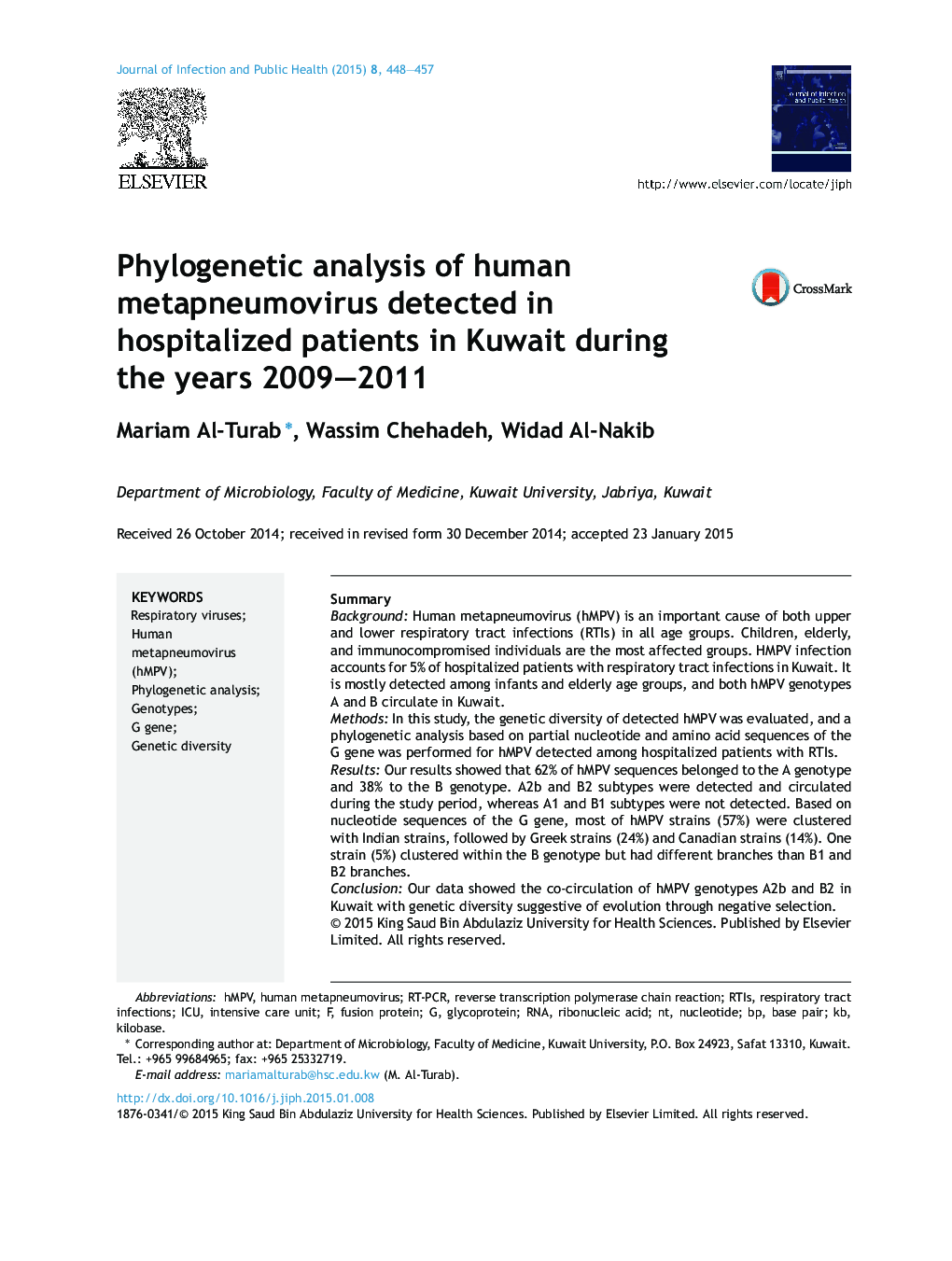| Article ID | Journal | Published Year | Pages | File Type |
|---|---|---|---|---|
| 3405853 | Journal of Infection and Public Health | 2015 | 10 Pages |
SummaryBackgroundHuman metapneumovirus (hMPV) is an important cause of both upper and lower respiratory tract infections (RTIs) in all age groups. Children, elderly, and immunocompromised individuals are the most affected groups. HMPV infection accounts for 5% of hospitalized patients with respiratory tract infections in Kuwait. It is mostly detected among infants and elderly age groups, and both hMPV genotypes A and B circulate in Kuwait.MethodsIn this study, the genetic diversity of detected hMPV was evaluated, and a phylogenetic analysis based on partial nucleotide and amino acid sequences of the G gene was performed for hMPV detected among hospitalized patients with RTIs.ResultsOur results showed that 62% of hMPV sequences belonged to the A genotype and 38% to the B genotype. A2b and B2 subtypes were detected and circulated during the study period, whereas A1 and B1 subtypes were not detected. Based on nucleotide sequences of the G gene, most of hMPV strains (57%) were clustered with Indian strains, followed by Greek strains (24%) and Canadian strains (14%). One strain (5%) clustered within the B genotype but had different branches than B1 and B2 branches.ConclusionOur data showed the co-circulation of hMPV genotypes A2b and B2 in Kuwait with genetic diversity suggestive of evolution through negative selection.
